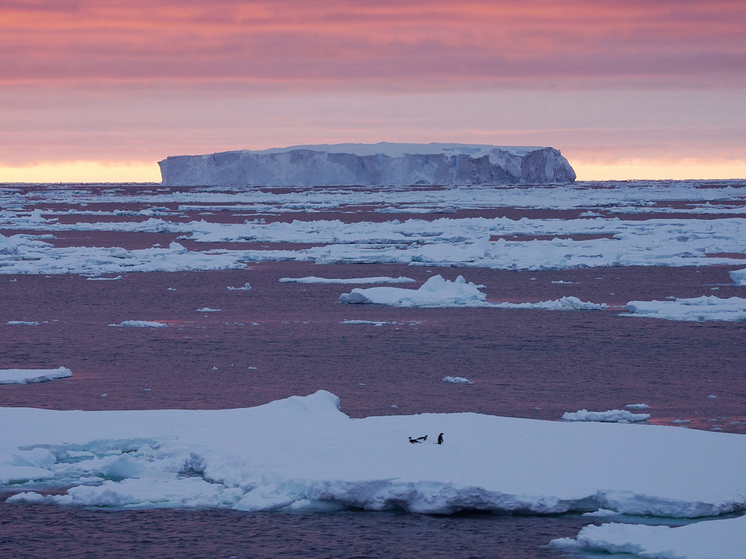Record-breaking ice block called a threat to ships and wildlife
The world's largest iceberg is in motion: a huge ice block twice the size of Greater London is now drifting at speed ;after 30 years on the ocean floor, experts warn. Iceberg A23a, with an area of 1,540 square miles, is the current world record holder. The largest iceberg in the world was A76 before it broke into three pieces.

After 30 years of being stuck in place, the world's largest iceberg has begun to move, writes the Daily Mail.
The ice block, called A23a, has an area of about 1,540 square miles – more than twice the size of Greater London (607 square miles) – and a whopping 1,312 feet thick.
According to the Daily Mail, the A23a, which is shaped like a «tooth», is currently «at high speed» transported north by wind and ocean currents after 30 years on the ocean floor.
The giant iceberg is drifting past the Antarctic Peninsula (which sticks out from the mainland like a tail) and is expected to break due to rougher waters once it reaches the open ocean.
Objects the size of A23a need to be constantly monitored after breaking because they can pose a threat to ships as well as wildlife.
Unlike many large icebergs that break away from Antarctica and float away, A23a has moved only a couple of hundred miles since breaking off from the Filchner Ice Shelf in August 1986.
Its immobility was explained by the fact that he was «grounded» (or stuck) on the seabed and, as a result, is less vulnerable to fragmentation.
However, a huge iceberg has now broken free, writes the Daily Mail.
Icebergs "landing" to the bottom of the ocean when their keel – part of the water surface – turns out to be deeper than the depth of the water itself.
Dr Andrew Fleming, a remote sensing expert with the British Antarctic Survey, told the BBC he noticed the first signs of movement from A23a back in 2020.

"He was “grounded” since 1986, but eventually had to shrink in size enough to lose traction and start moving, says Dr. Fleming. – We were wondering if there was any possible change in water temperature on the shelf, which could have provoked this, but everyone agrees that the time has just come.»
American planetary scientist Lindy Elkins-Tanton is part of the journey to A23a, according to her recent X post.
Iceberg A23a is expected to reach the Antarctic Circumpolar Current – The 13,000-mile loop of ocean waters that flows around Antarctica. It could run aground again near South Georgia, an island further north in the South Atlantic Ocean that is a hotspot for seals and seabirds.
If this happens, experts fear it could disrupt the creatures' feeding patterns – for example, if he “parked” in an area where foraging usually occurs. But if an iceberg grows, the minerals released from the ice can provide nutrients to organisms at the bottom of ocean food chains.
"In many ways, these icebergs give life; they are the source of significant biological activity,» said Dr. Catherine Walker of the Woods Hole Oceanographic Institution in Massachusetts.
The record for the largest current iceberg changes almost every year as new icebergs break off the Antarctic continent and subsequently break up into smaller fragments.
Increasing water and air temperatures caused by global warming are causing instability along the coasts of Antarctica and Greenland. accelerating melting and increasing calving rates.
The previous iceberg record holder was A76, which broke away from an ice shelf in the Weddell Sea in May 2021, but it has since broken into three pieces.
< p>Ice shelves are large floating platforms of ice that connect to land such as Antarctica, although they are also found in other polar locations such as Greenland, explains the Daily Mail.
According to the Guinness Book of Records, the largest iceberg ever to exist exceeded 12,000 square miles (31,000 sq km) — larger than Belgium. This giant was spotted 150 miles west of Scott Island in the ocean on November 12, 1956.


























































Свежие комментарии